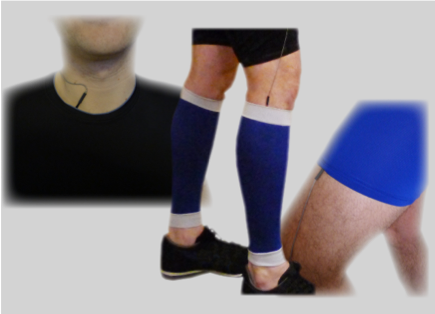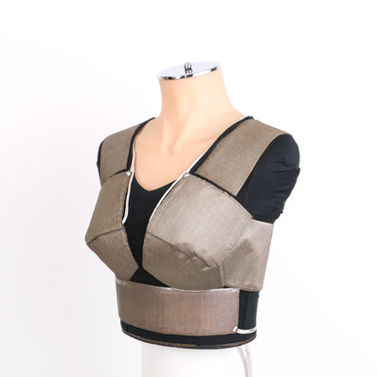Tactile Pressure Sensors: A Perfect Fit for Clothing Design
Though it might not always be obvious to the casual observer, the clothing worn by Olympic and professional athletes can be as sophisticated and technologically advanced as anything else in their toolbox. Beyond simply making the athletes look good or protecting them from the elements, their outfits are, depending on the sport, often engineered to perform specific functions, like reducing drag or supporting muscle use.
This highlights a general trend that goes beyond high-level athletic competitions: People are demanding more and more of their clothing, not just in terms of fit—which they expect to be precisely right—but in terms of functionality. And tactile pressure sensing technology can play a key role in helping manufacturers as they race to meet these demands.
Engineering highly advanced athletic wear requires an accurate and reliable way to ensure that it fits correctly. Having testers try on the clothing is often not a desirable option, as people are not, as a general rule, very good at detecting static pressures. A tactile pressure sensor, on the other hand, could capture and quantify the amount of pressure users would feel when wearing the design, thus making it possible to optimize both fit and function.
Capacitive tactile pressure sensing technology is well suited to this task for many reasons. Chief among them is the fact that it can accurately measure pressures at relatively low levels, as clothing fit often involves pressures of less than 1 psi. The other advantage of capacitive tactile sensing technology is that capacitive tactile sensors can be soft, flexible, and conformable, which is a necessity when developing clothing that must often hug the wearer’s skin tightly.
Capacitive tactile pressure sensors can be embedded in mannequins for testing and development of clothing. Or they can be simply sewn into straps that go between the clothing and a mannequin or human tester during the development process.
Of course, the potential of capacitive tactile pressure sensors to augment clothing design does not end with athletic gear; there’s an entire range of functions that can be supported.
Consider, for example, bras, an area in which proper fit is crucial; a tactile pressure sensor-equipped mannequin could be one solution for companies aiming to improve bra design. Another logical use for tactile pressure sensing technology would be in the area of shapewear, garments that are designed to hold various parts of the body in such a way as to modify and ostensibly improve the wearer’s appearance. Quantifying pressures would be a crucial element of creating shapewear that is just tight enough in the right places to create the desired effect without being excessively constrictive.
Pressure Profile Systems (PPS) demonstrated this principle when asked by a diaper manufacturer to help devise a method for verifying the fit of diapers, another wearable product in which striking a precise balance between tightness (to ensure a proper seal) and comfort is key. PPS incorporated conformable tactile sensing technology into sensing bands that could go around the waist and legs of a baby-shaped mannequin, thus enabling the manufacturer to measure the pressures applied by its diapers.
Tactile pressure sensor technology could also assist in the development of garments that have medical applications, like compression stockings meant to treat and prevent deep-vein thrombosis, a complication that often involves the formation of potentially serious blood clots in the lower leg and calf. Additionally, it could be useful for companies that make the elastic tape that some athletes use to support their muscles.


